
The central plains area of Thailand, often called the country's ricebowl, is a wet place. It has four big rivers slowly flowing through it plus many canals dug for transport, drainage and irrigation. It's a vast floodplain that in some years, notably 2011, struggles to cope with the deluge of water coming down from the north.
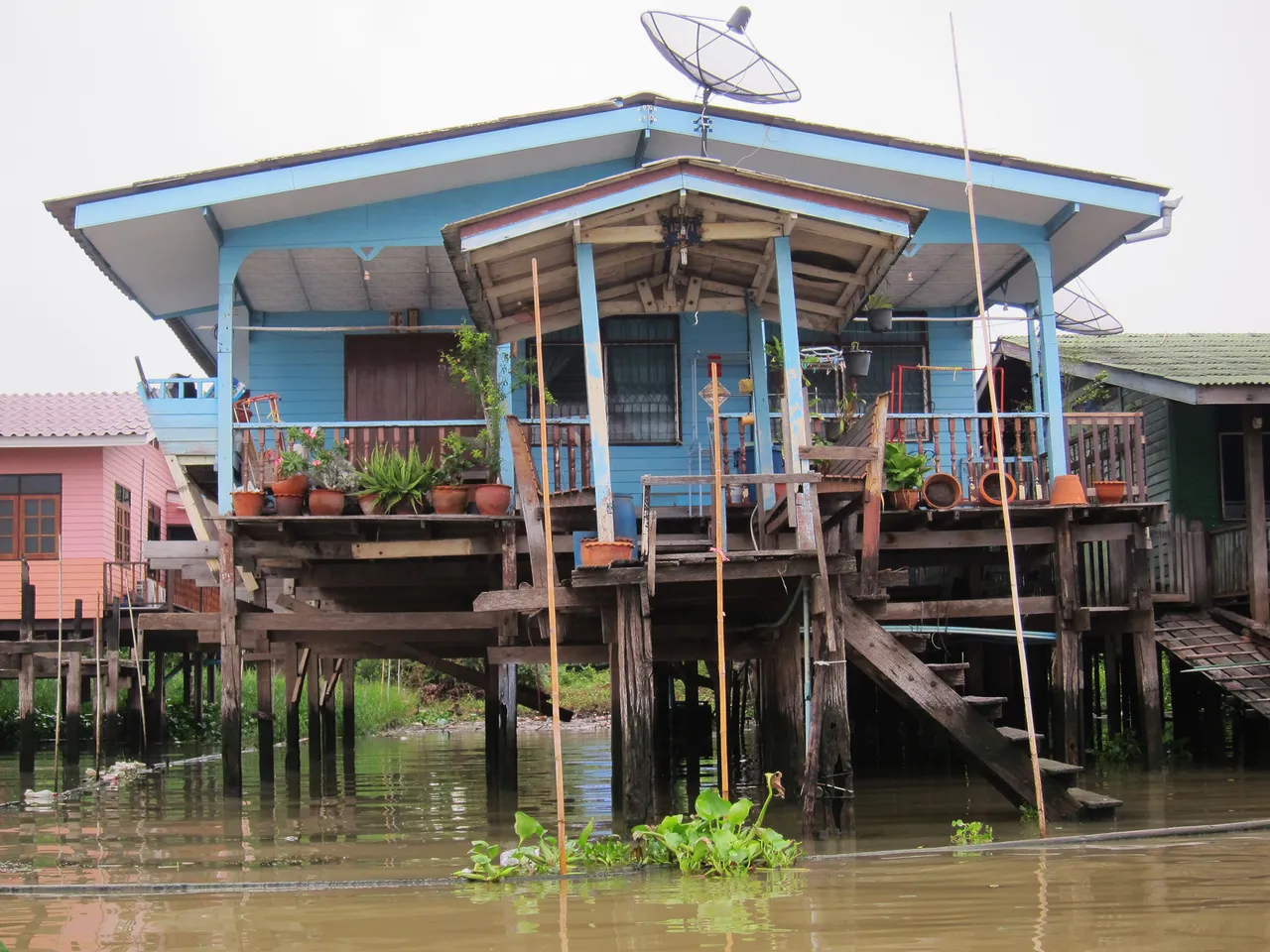
Old style stilted house

New construction of a traditional style of house

Checking fishing nets in their local canal - a lovely morning routine, no wonder they are happy
And before the road network fully developed these waterways were how people got around. Most lived in stilted houses next to the water with a boat always at the ready. Every temple had a waterfront and the morning alms round was done by boat. And kids grew up with the canal or river as their playground. Then along came paved roads and as the focus shifted landward society drifted away from the water. The old lifestyle was lost.
Or was it? A tourist trip around Bangkok's canals gives a hint that something remains, and elsewhere some picturesque floating markets still throng with life as old ladies paddle around in lampshade hats hawking their wares. But these examples are from the world of tourism, how about real life?

Ready to launch on the Kwae Noi in Kanchanaburi
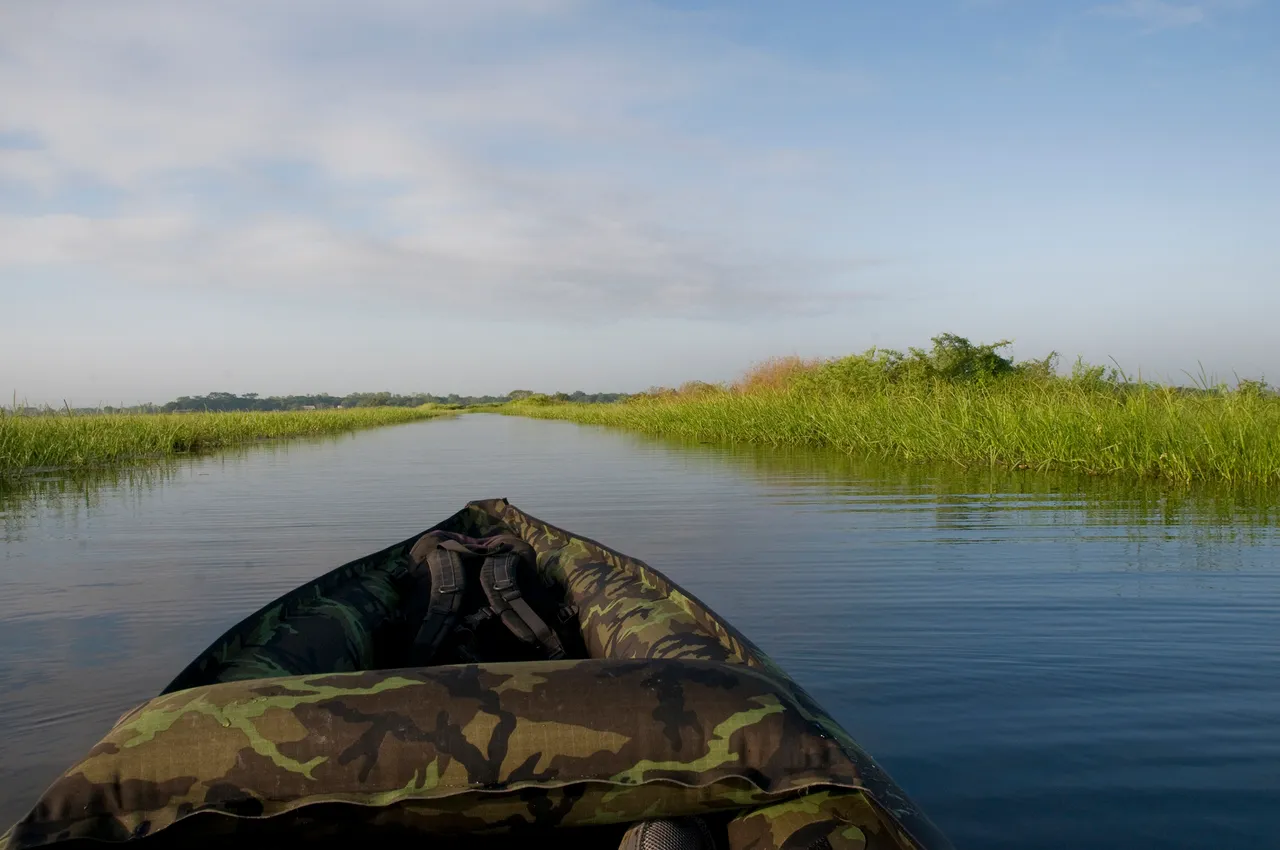
Early morning on the placid waters of Beung Boraphet
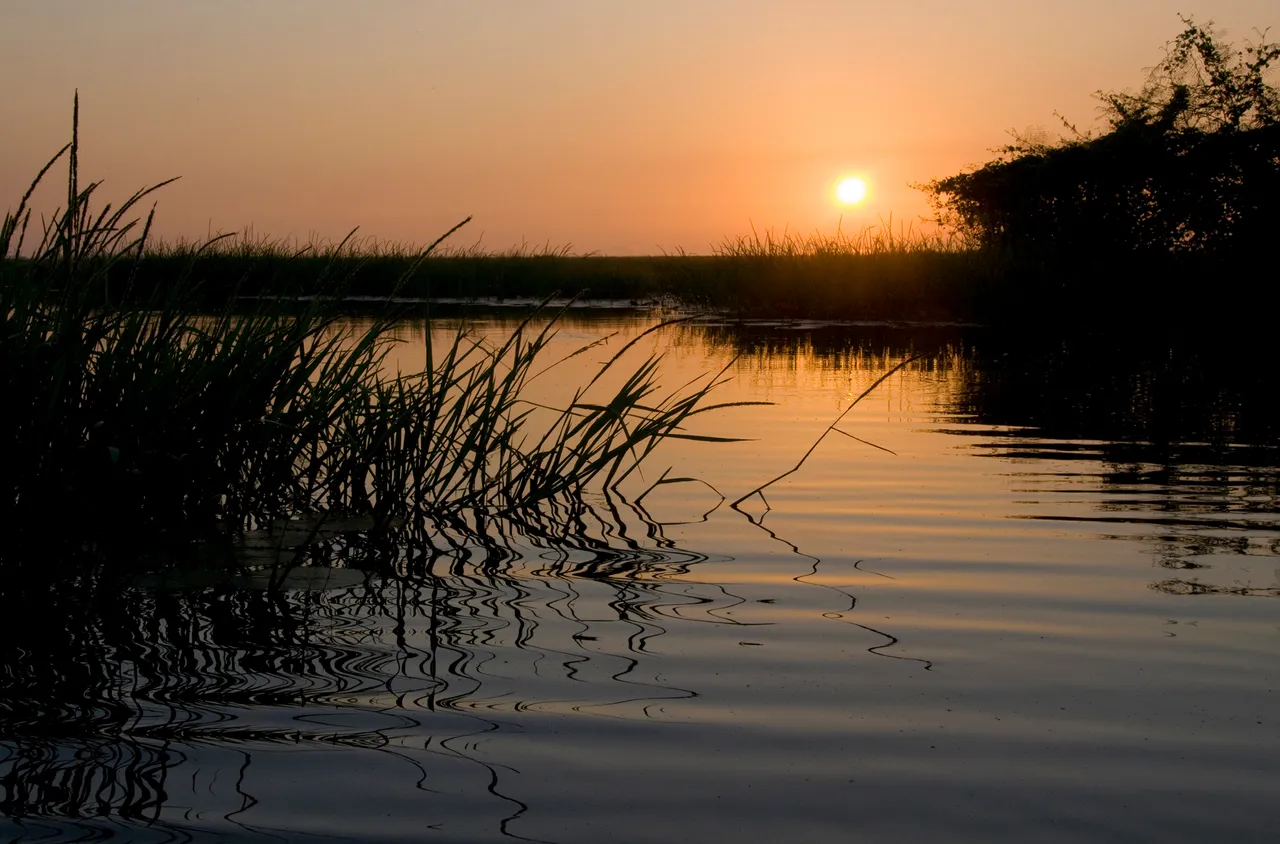
Waterway sunrise
I bought an inflatable kayak with the aim of having a look. I actually bought two incase anybody wanted to come with me. They were Innova Twist kayaks, a single and a double, bought from a supplier in Thailand who no longer exists. I bought inflatable for their portability.
I pored over maps and GoogleEarth looking for good routes. Ideally, I wanted circular trips with somewhere safe to leave the car and a good launch-point. I found a number of good possibilities and temples seemed ideal as car-park-starting-points.
This wasn't going to be white-water excitement, it would be placid paddling on gentle waters mainly around more rural areas and hopefully with small communities still living in touch with nature. A different angle on the Thai experience.

Floating house on the Chao Phraya river
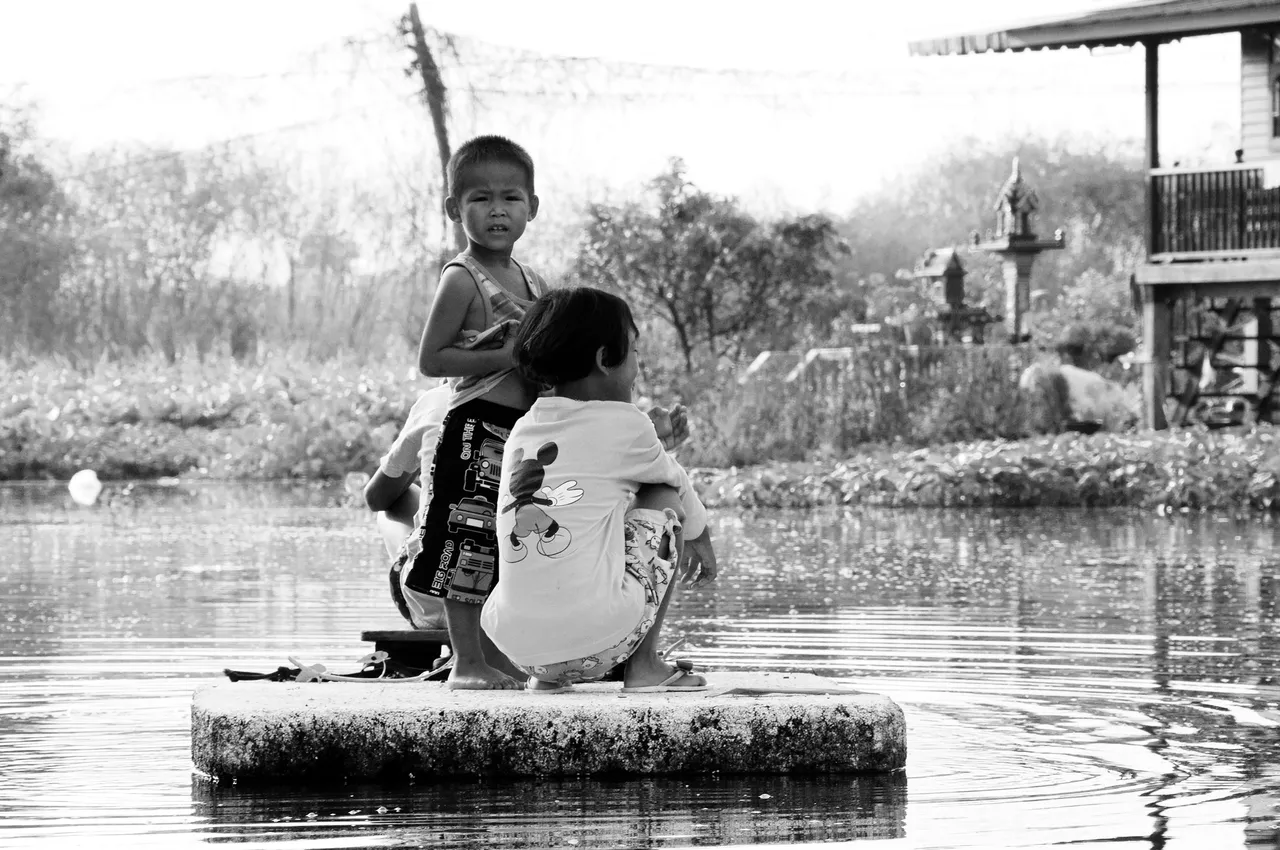
Polysterene boat - much cheaper than mine
For my first trip I was full of nervous excitement. I didn't go far, less than 10km from where I was living, still within the hold of Bangkok but it was a solid test of the idea. Everything worked well as I got the boat ready within 15 minutes and launched with the morning sun just peeking over the horizon. The canal was a wide one at about fifty metres, with the far bank being less urban and much more interesting. I passed an old lady tending to her floating vegetable garden from her own paddle-boat. After a few moments of blank staring she returned my smile. Her wooden home was rough and almost enveloped by luxuriant vegetation with uneven, well-worn plank walkways extending into the canal. A big contrast to the concrete homes on the other side where the canal was just a place to dump.
That day I only went about 2km before turning around at the grating noise of a large road-bridge but I felt satisfied that I could be more ambitious next time. Even on a canal spanned by a major road and lined on one side by concrete it had been absolutely lovely out on the water.

Old waterside family home with plenty of coconuts
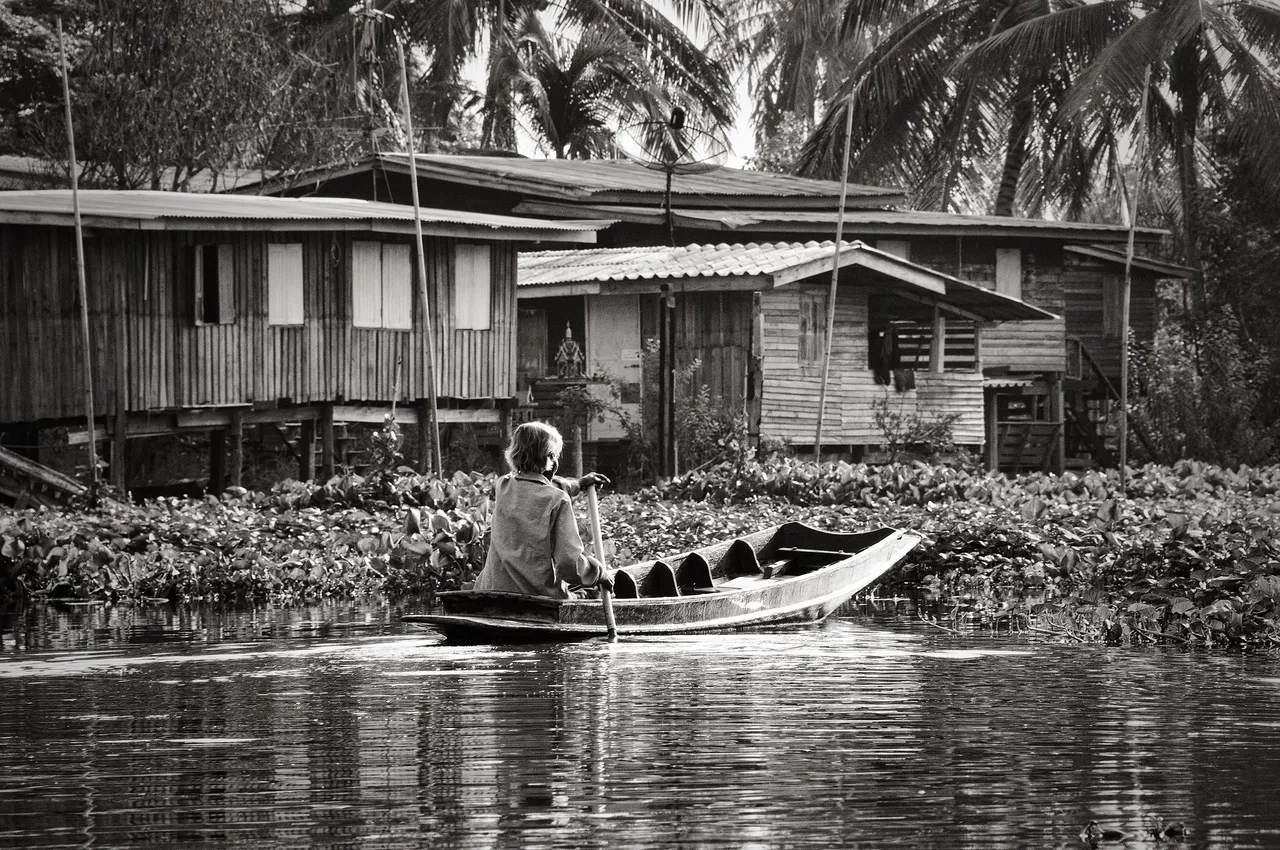
This was the woman in a hurry who overtook me
Over the next few weeks I had several more pleasant paddles around Thailand's back-waters. I got to see monks being quietly paddled along tree-fringed canals at dawn with villagers waiting waterside with their food offerings. I saw people washing pots and themselves in the canals and lots of children leaping for the joy of splashing. And I even got overtaken by a determined elderly woman in a wooden boat paddling off into the distance on some errand. The old ways were still there, just invisible from the roads.
But... The state of the water was so depressing. It was dark, dank and in places smelled quite unpleasant. A combination of run-off from agriculture, industry, roads and the ever-burgeoning residential population. All the dregs of our ways seeping into what once were society's living arteries. I certainly wouldn't want to swim in those waters and always thoroughly rinsed the bottom of my boat afterwards. I felt so sorry for the individuals and communities still trying to live the waterside life poisoned by the rest of us.

The relative wildness of the Kwae Noi in Kanchanaburi
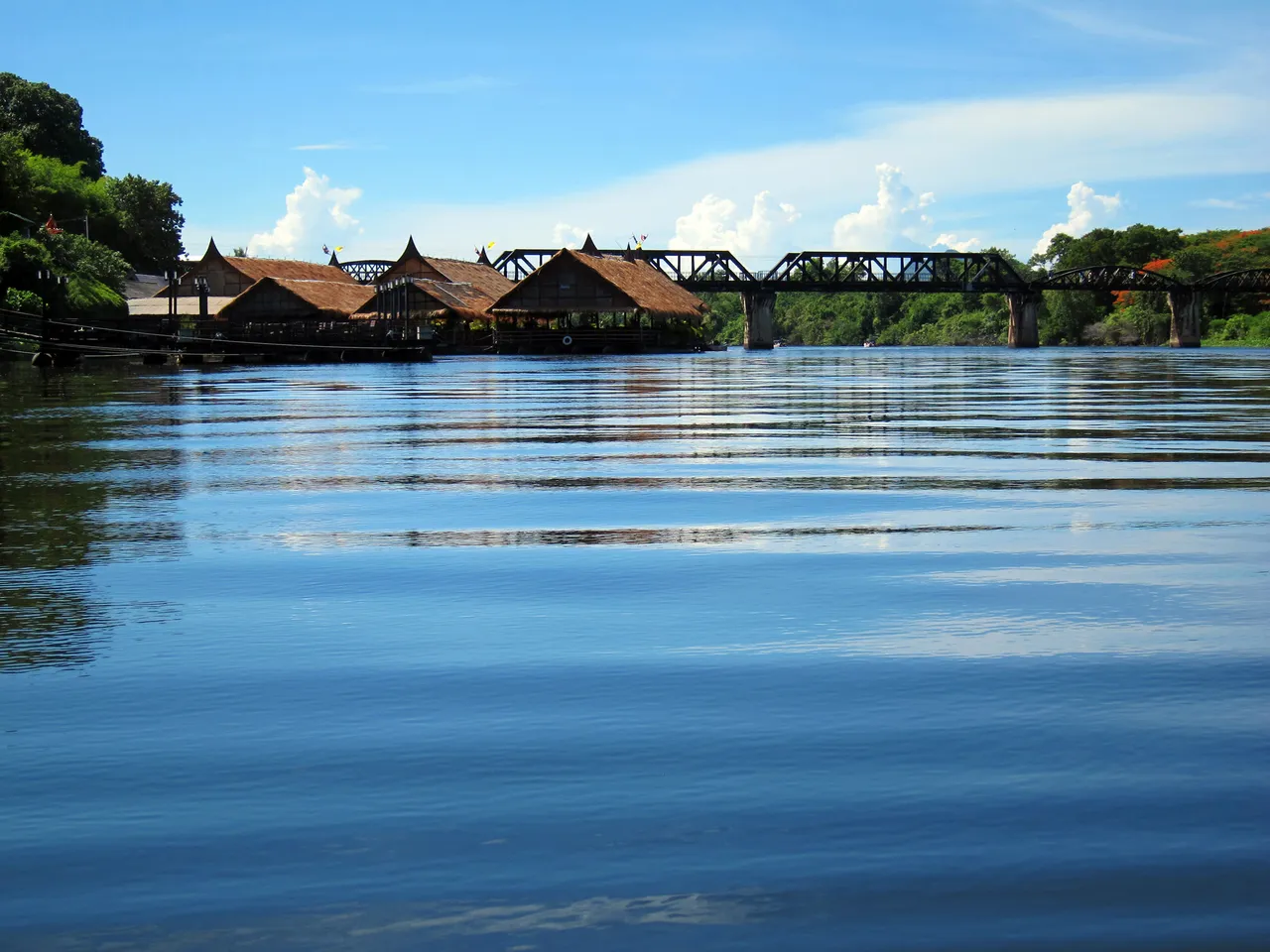
The famous bridge over the River Kwae (the movie calls it the River Kwai)
I also grew more accustomed to some practical limitations of my trips. One was the heat. The sun in Thailand rises quickly and goes high, to the extent that within two hours of dawn there is no shade other than the occasional bridge. Basically by 9am it is no fun any more and the harsh light has striped the waters of their beauty. Therefore, I only planned short trips for the 2-3 hours after dawn and before dusk, and forgot any idea of all-day trips.
The second problem was harder to predict, although GoogleEarth did help. Water hyacinth, an introduced floating plant, has taken over some lowland waterways to the extent of making them impassable to vessels much bigger than mine. It grows in thick mats that can rise a metre off the water surface. Local authorities do clear it away but it grows much faster than they work. Fortunately, there was only one route that I had to abort due to this plant where a planned 7km round-trip became a 2km there-and-back.

The enormous bulk of the barges on the Chao Phraya river - I kept well out of their way

Water hyacinth totally blocking my route
A third problem came as a surprise. I had found a great route just west of the old capital of Ayutthaya. Seven kilometres up a river's side-channel then 12km down the main river back to the temple where I had started. It meant hard work paddling against the flow at first but exercise was part of the reason for doing this. The up-stream paddle was tough but brought with it the lovely surprise of lots of Pied Kingfishers, a bird I hadn't seen elsewhere except once off in the distance. Here there were family groups who kept moving ahead of me until they reached their territorial boundary where they circled back around and were replaced ahead by the next family. I estimate I saw about 20 of them along that stretch.
Finally reaching the main river felt great but the downstream flow immediately seemed weak. Within a kilometre it had totally stopped and a kilometre further it had started flowing against me! In a direct line I was 100km inland from the sea but the river was tidal and it was working against me. Once I realised what was happening I swore, put my head down and paddled with little enjoyment. I can confirm that paddling 17 out of 19 kilometres upstream is no fun and drags you into the blistering heat of late morning. I checked later and given the sparsity of available tidal information and the complexity of the time delay as it flows inland I would have struggled to predict it accurately but at least I was now aware of the possibility.
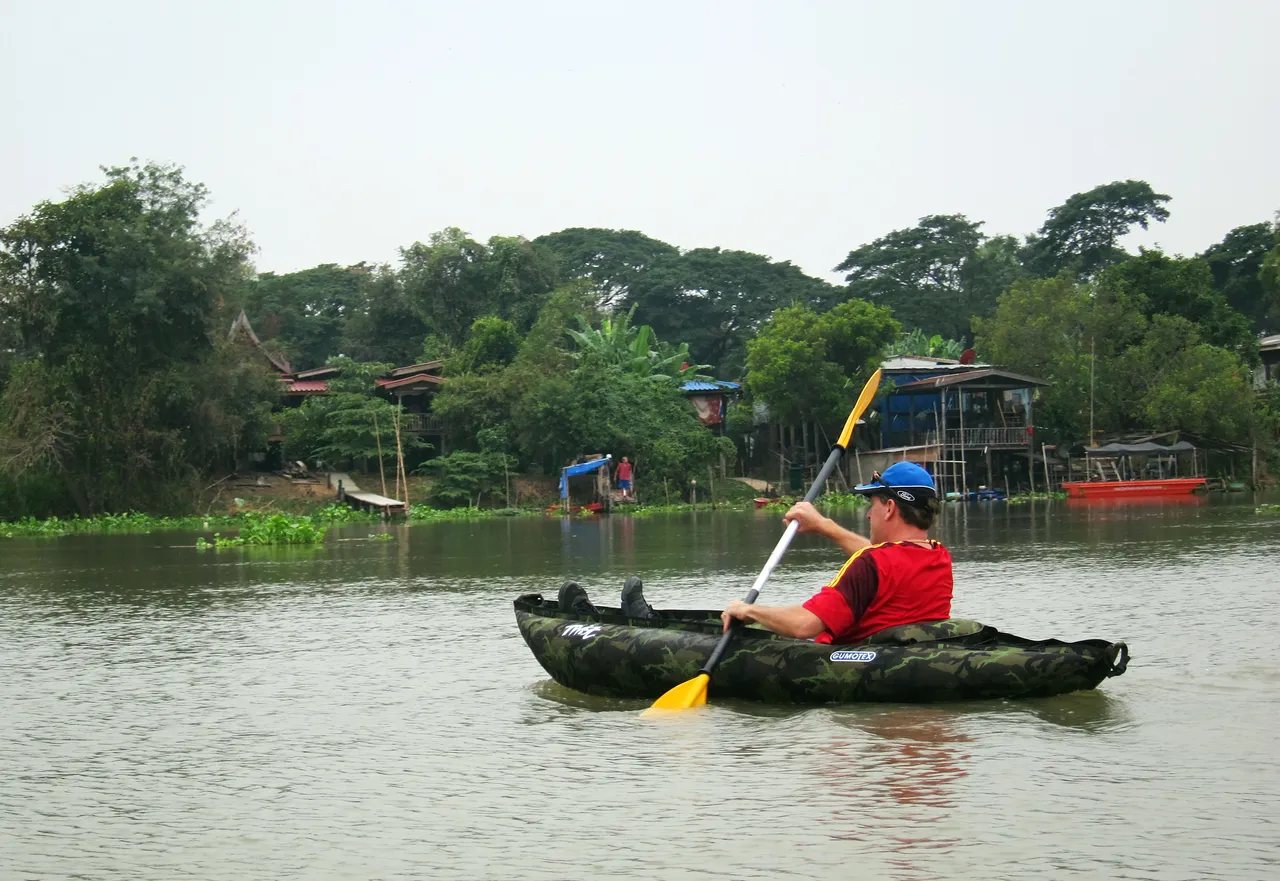
Messing around on the Chao Phraya river
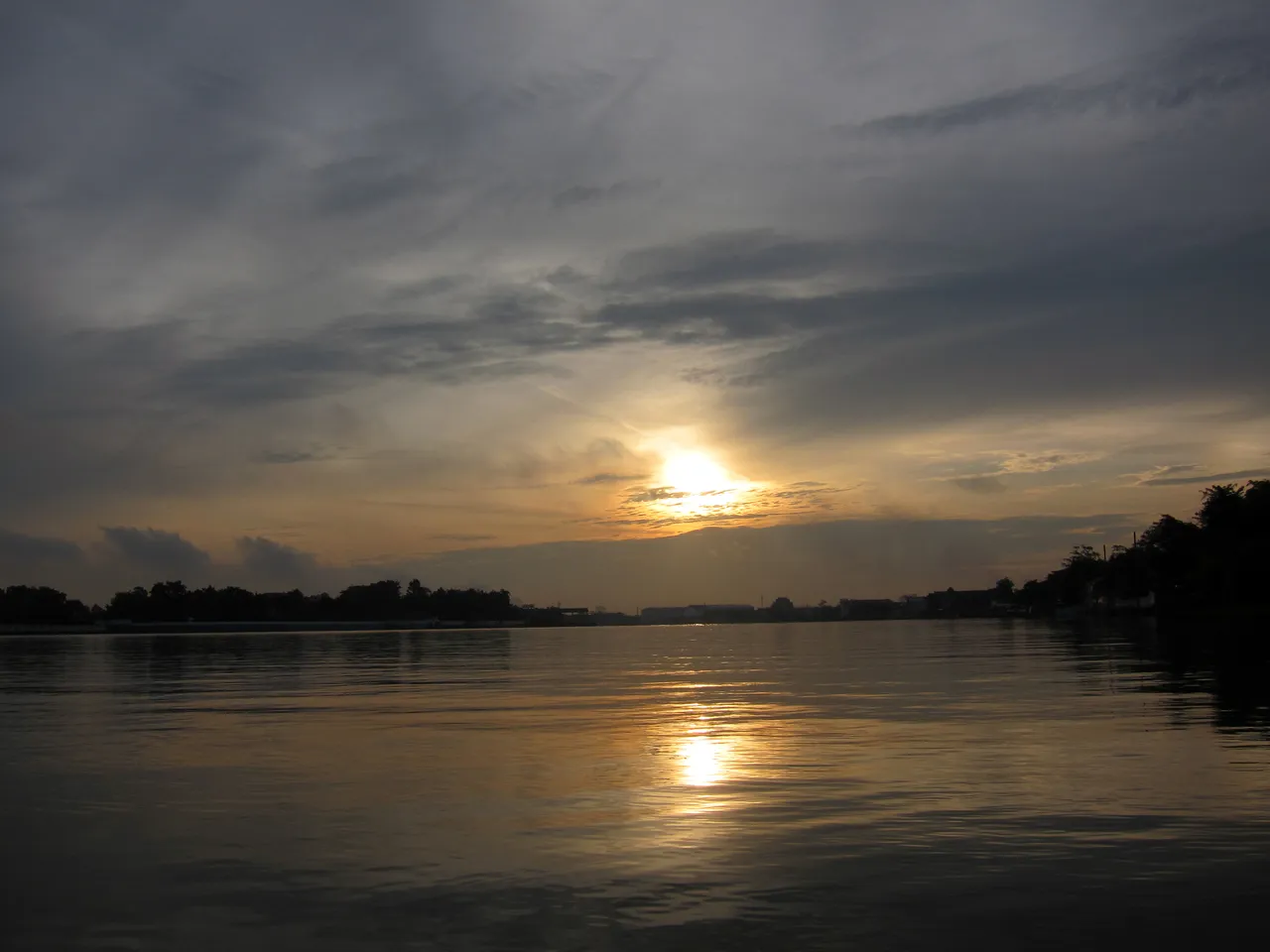
Sunrise on the Chao Phraya river
Another minor problem I discovered was how difficult photography was from an inflatable kayak in waters with always at least a little flow. As soon as I stopped paddling and raised my camera the boat turned and I was twisted out of shape!
Nature was a highlight on another trip that had been recommended by my wife's nephew. Along a small canal that runs into Thailand's main river, the Chao Phraya, near the town of Bang Pa'in, there is a breeding colony of Openbill Storks in the canalside trees. Not easily accessible from roads and with no water traffic on the canal it was a lovely paddle as a friend and I were constantly watched by hundreds of busy storks.
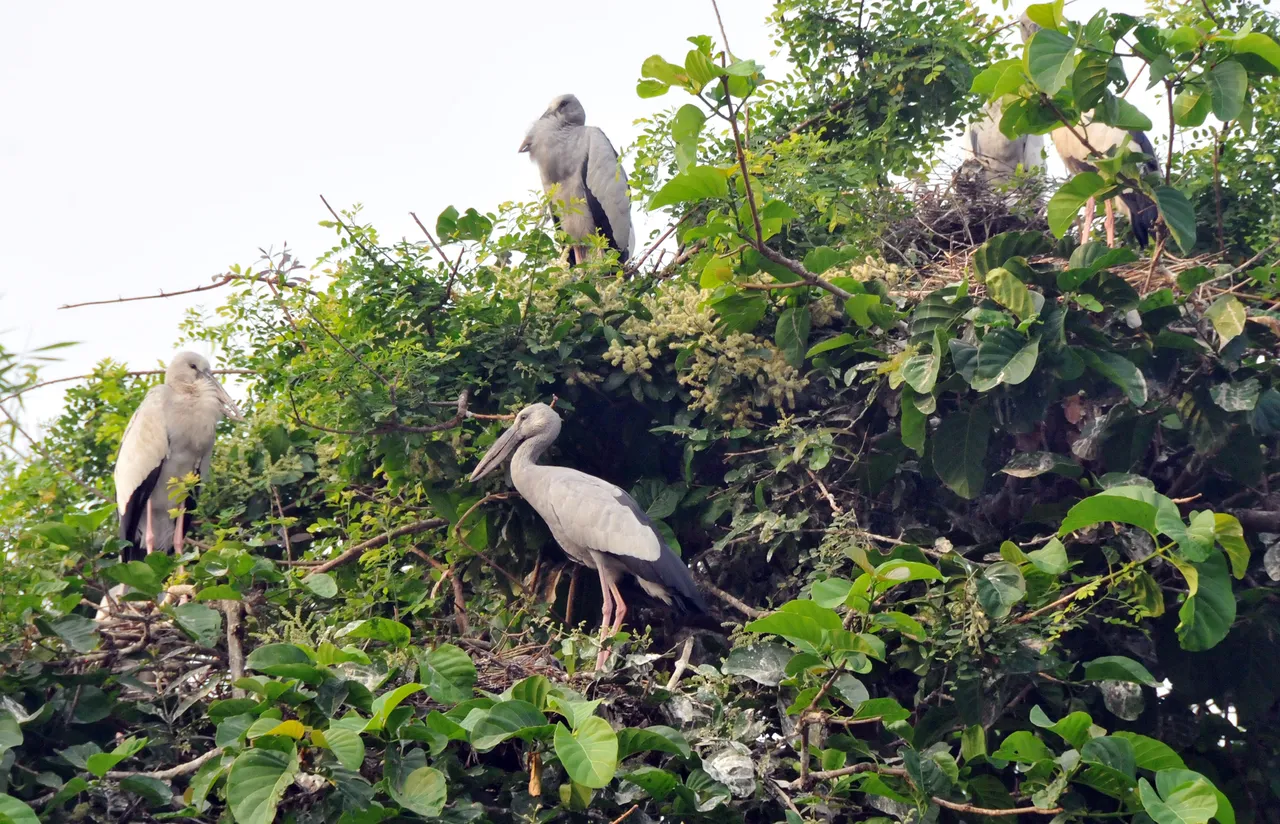
Openbill stork breeding colony
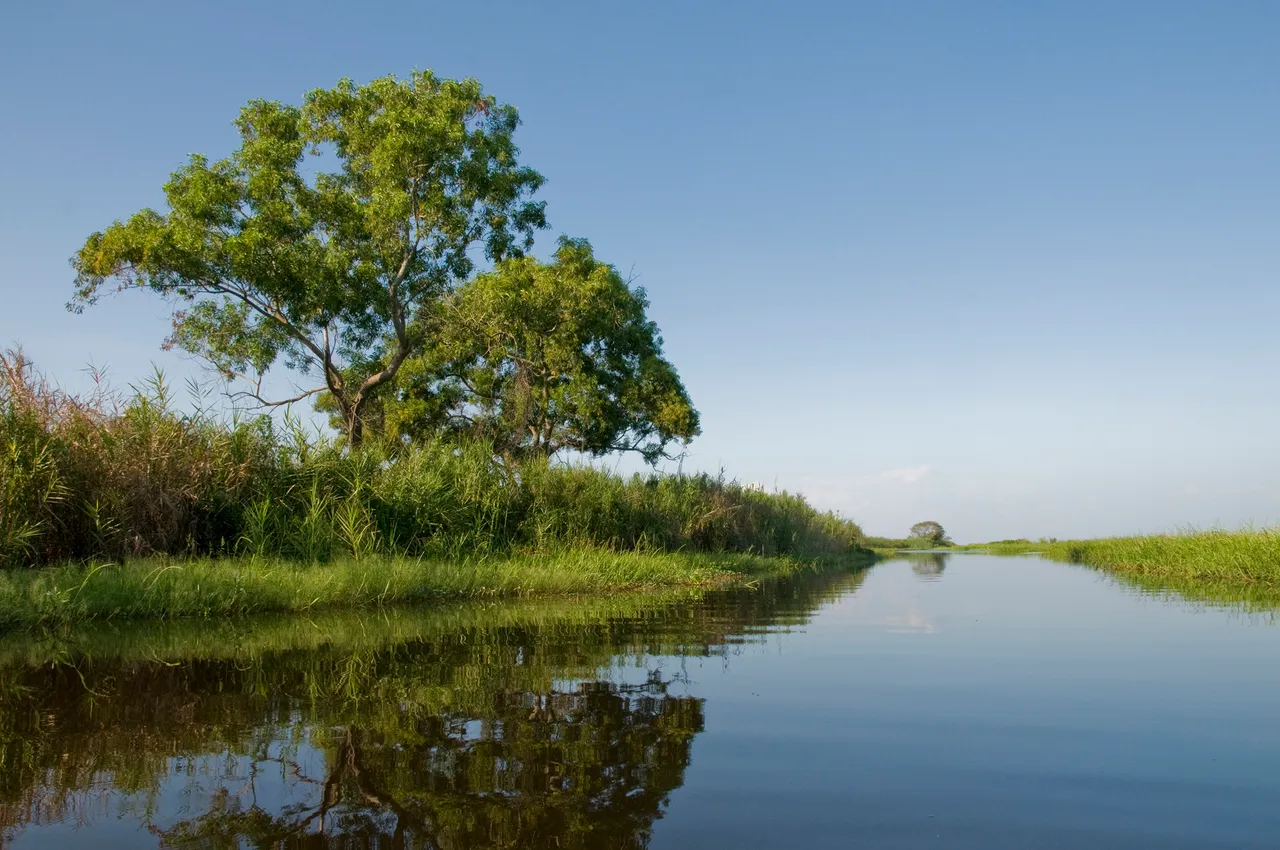
The much cleaner water of Beung Boraphet at the northern end of the plains
I also tried two different types of water. One was the enormous inland lake of Beung Boraphet with its fabulous seas of flowering lotus and stunning bird-life. The distances involved restricted how much of it I could see by paddle-power and the constant drone of long-tailed boat engines was annoying but it was probably the trip with the most natural beauty.
I also dipped my paddle into the sea in the far south-eastern province of Trat. It was a brief trip purely to see the swarms of colourful fist-sized jellyfish that congregate at certain times of year. Another beautiful couple of hours bobbing around on calm waters in early morning light surrounded by a superb natural phenomenon.
But the main purpose had been to have a closer look at the old Thai lifestyle of living by the water. And that was a great success. I had many happy hours paddling passed wooden houses with happy people laughing at me and occasional barking dogs who couldn't get at me!
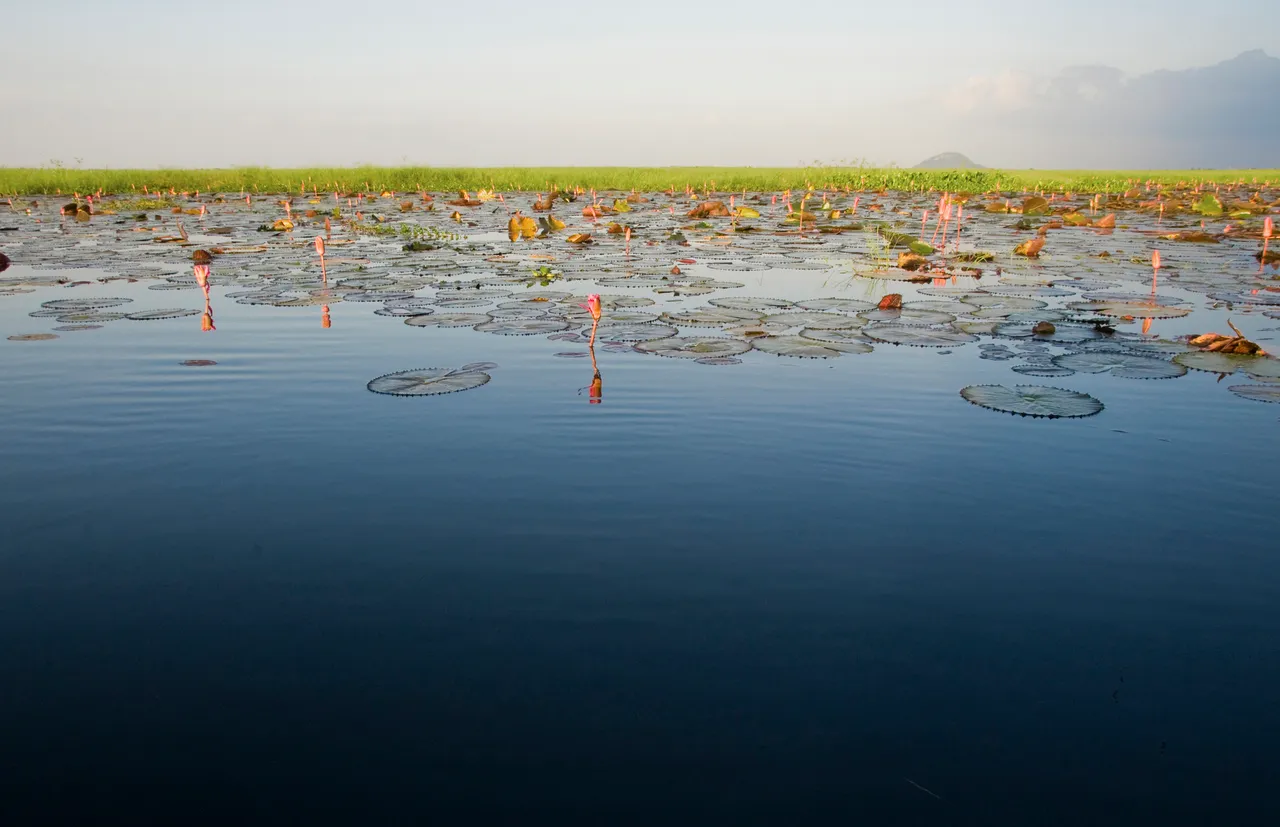
Lotus at Beung Boraphet
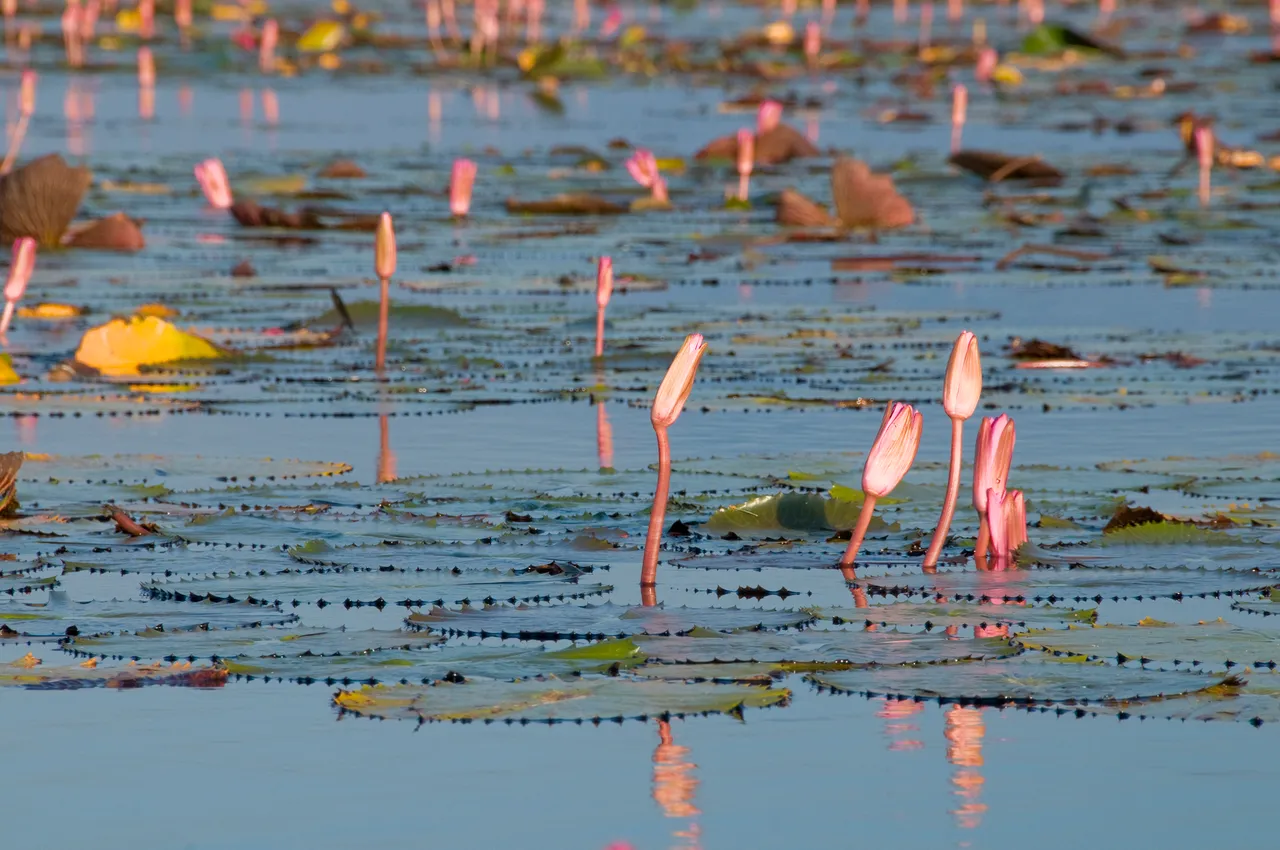
More lotus at Beung Boraphet
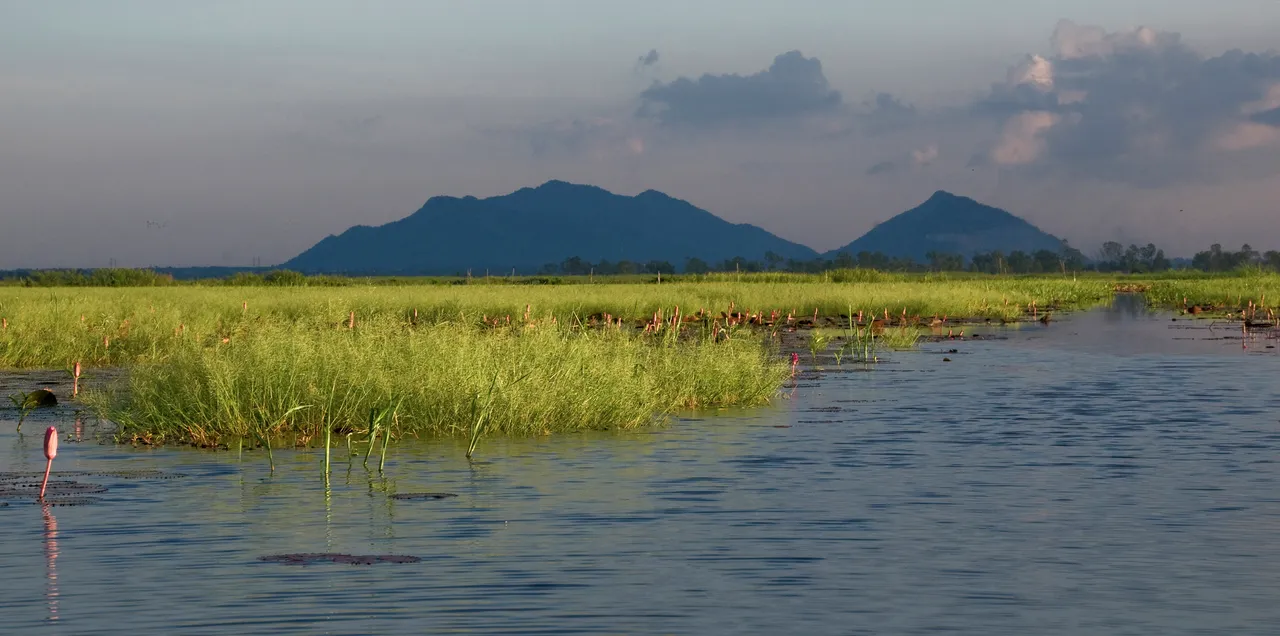
The extensive marshes of Beung Boraphet
I can actually see enormous potential in resurrecting this way of living. Partly for tourism. Long trips through these more traditional communities covering both canals and rivers with waterside overnight stops and good food throughout. Who wouldn't want the experience? But also for Thai residents, perhaps the better-off would relish the chance of convenient road access at the front and canal life at the back. But some effort to cleanup the water quality would be needed first.
In the end these paddling trips came to an end when the glued seams of my boats started coming undone. The 3-dimensional curve of the seams made them impossible for me to repair properly and nowhere I could find was willing to have a go for me. But, anyway, being on the water when your boat starts falling apart does make you lose confidence in the vessel.
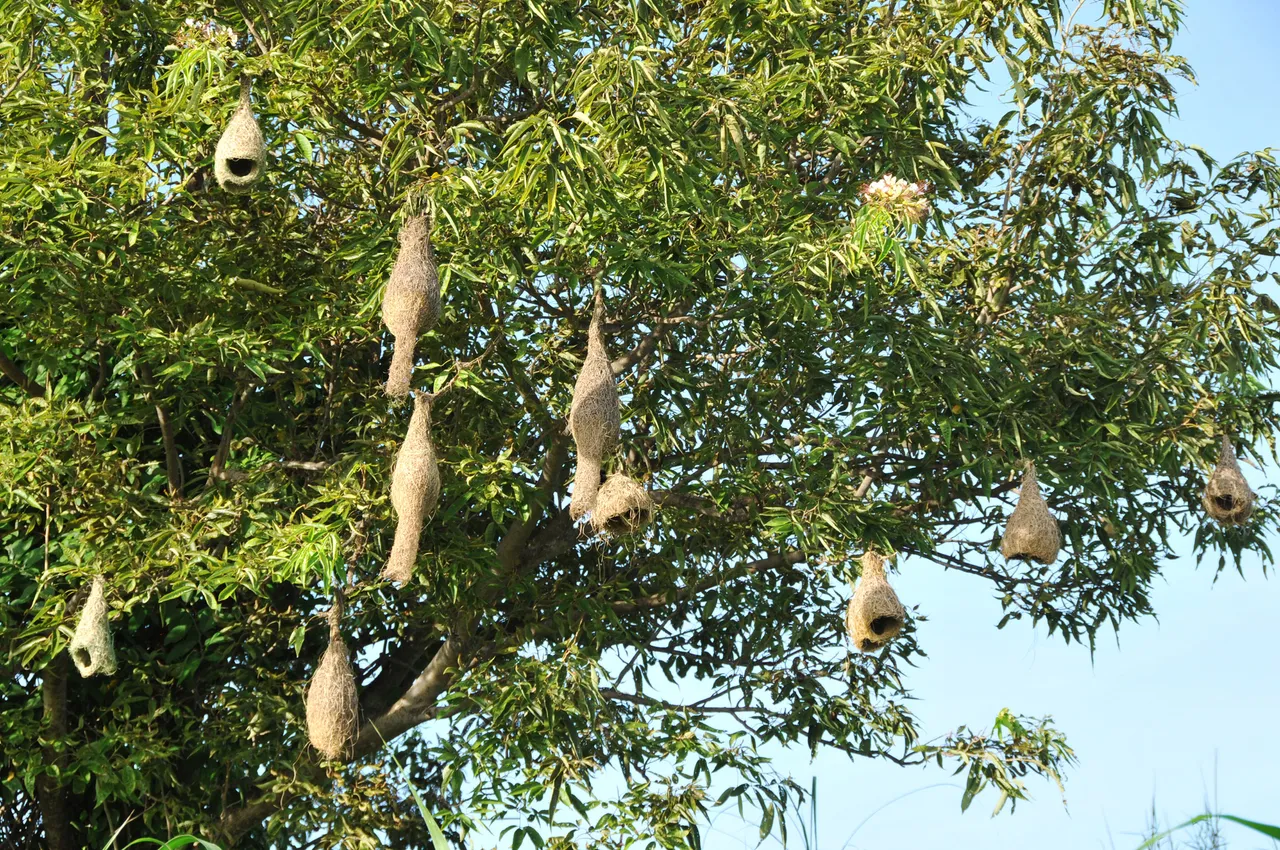
Baya Weaver bird nest in canalside trees

The sun setting on my kayak adventures?
I really miss those trips. It was definitely one of my better ideas. I am now thinking about getting myself a more solid kayak and starting up again.
